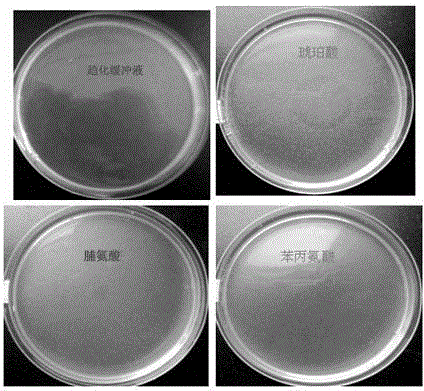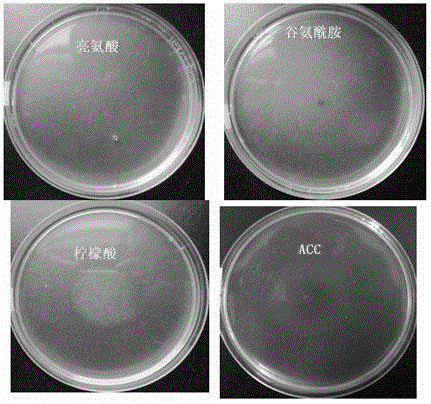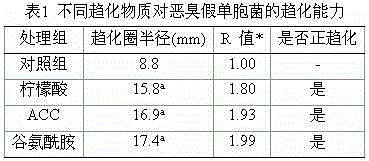Application of 1-aminocyclopropane-1-carboxylic acid as bacterial chemotactic substance
A technology of aminocyclopropane and carboxylic acid, applied in the biological field, can solve problems such as inability to form bacterial film, and no longer have the effect of promoting production and increasing production.
- Summary
- Abstract
- Description
- Claims
- Application Information
AI Technical Summary
Problems solved by technology
Method used
Image
Examples
Embodiment 1
[0015] 1.1 Experimental strains
[0016] Pseudomonas putida UW4 ( Pseudomonas putida UW4): Deposited by the American Agricultural Research Culture Collection (the deposit number is NRRL B-50193, the deposit date is June 9, 2008). The United States Agricultural Research Culture Collection is located in Pecheria, Illinois. It is a government culture collection supported by the Agricultural Research Center of the United States Department of Agriculture. The full English name is Agrieultutal Research Service Culture Colleetion, or NRRL for short.
[0017] culture medium
[0018] LB liquid medium: 5 g yeast extract, 10 g tryptone, 10 g NaCl, 1000 mL deionized water.
[0019] LB solid medium: yeast extract 5 g, tryptone 10 g, NaCl 10 g, agar 20 g, deionized water 1000 mL.
[0020] TSB liquid medium: soy peptone 3 g, tryptone 17 g, glucose 2.5 g, sodium chloride 5 g, dipotassium hydrogen phosphate 2.5 g, add distilled water 1000 ml, pH 7.1-7.5, autoclave at 121 °C for 30 min....
PUM
 Login to View More
Login to View More Abstract
Description
Claims
Application Information
 Login to View More
Login to View More - R&D
- Intellectual Property
- Life Sciences
- Materials
- Tech Scout
- Unparalleled Data Quality
- Higher Quality Content
- 60% Fewer Hallucinations
Browse by: Latest US Patents, China's latest patents, Technical Efficacy Thesaurus, Application Domain, Technology Topic, Popular Technical Reports.
© 2025 PatSnap. All rights reserved.Legal|Privacy policy|Modern Slavery Act Transparency Statement|Sitemap|About US| Contact US: help@patsnap.com



